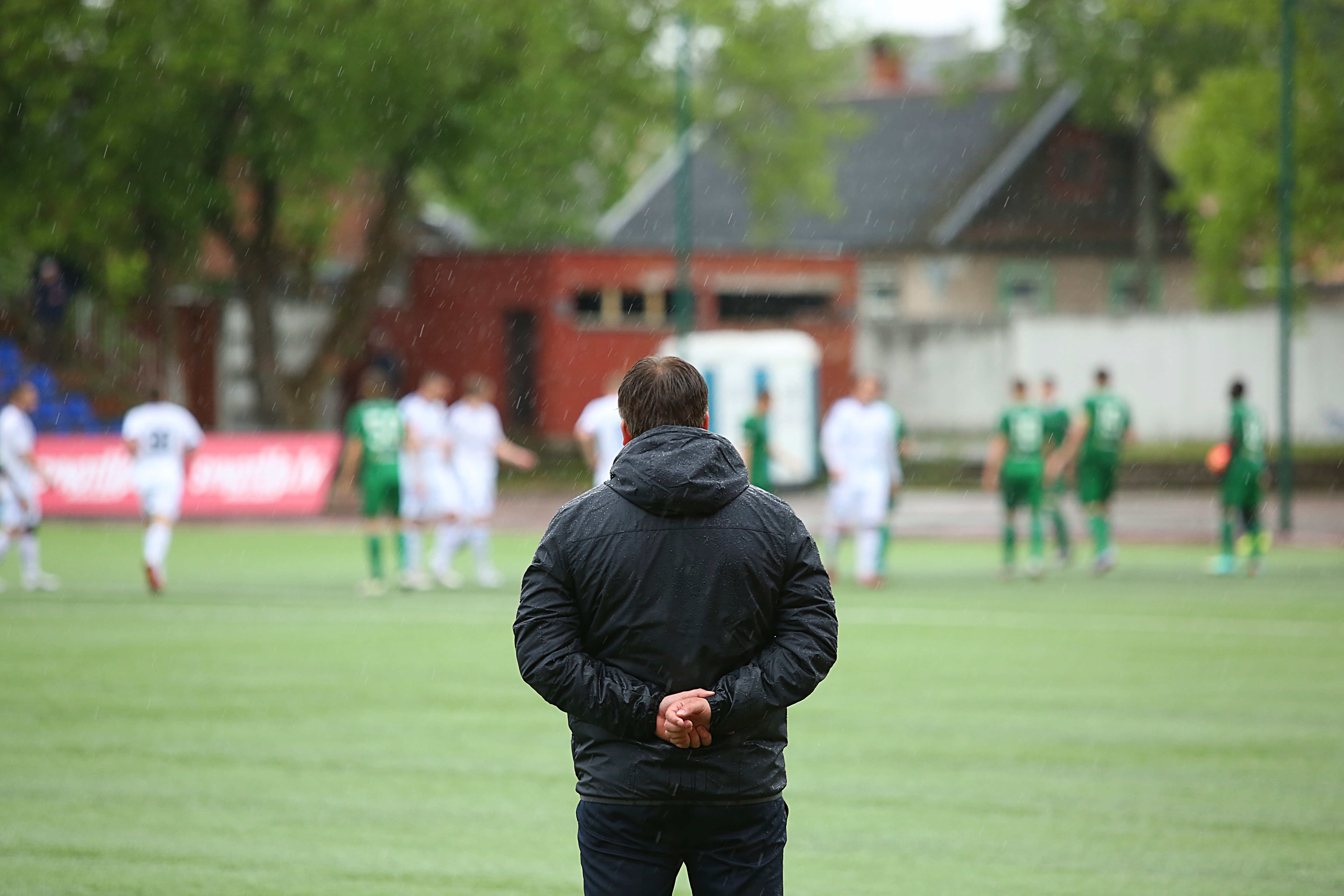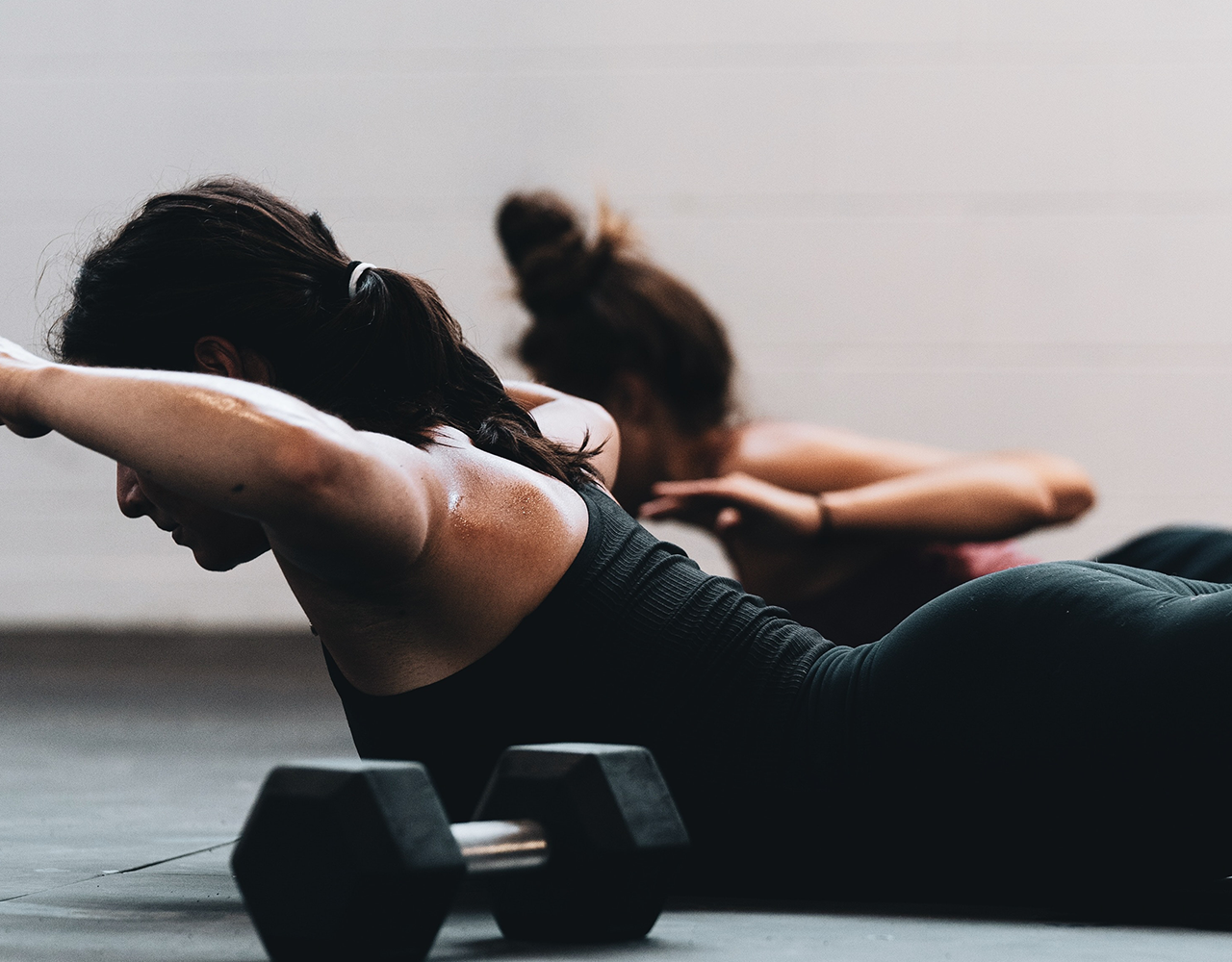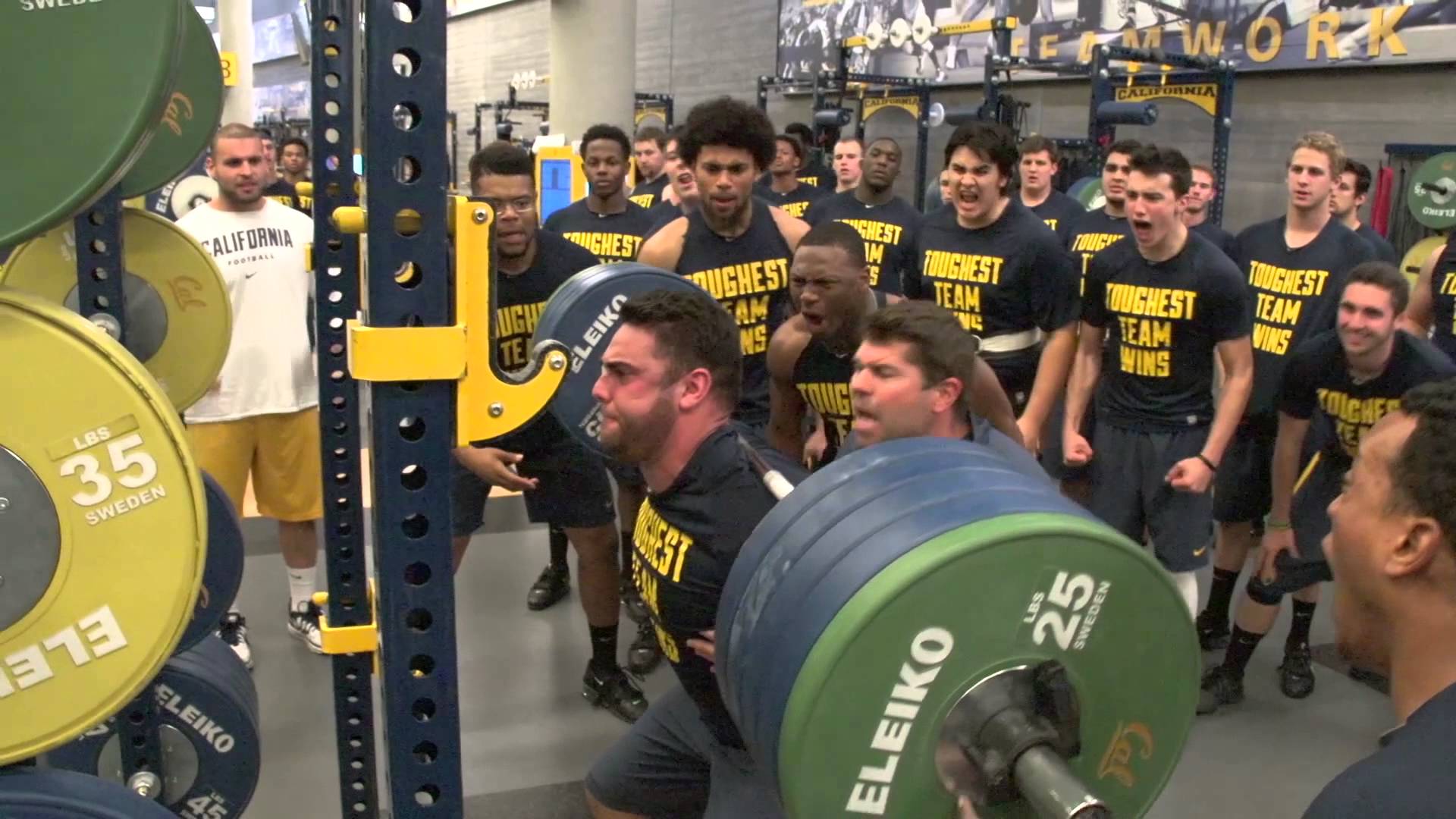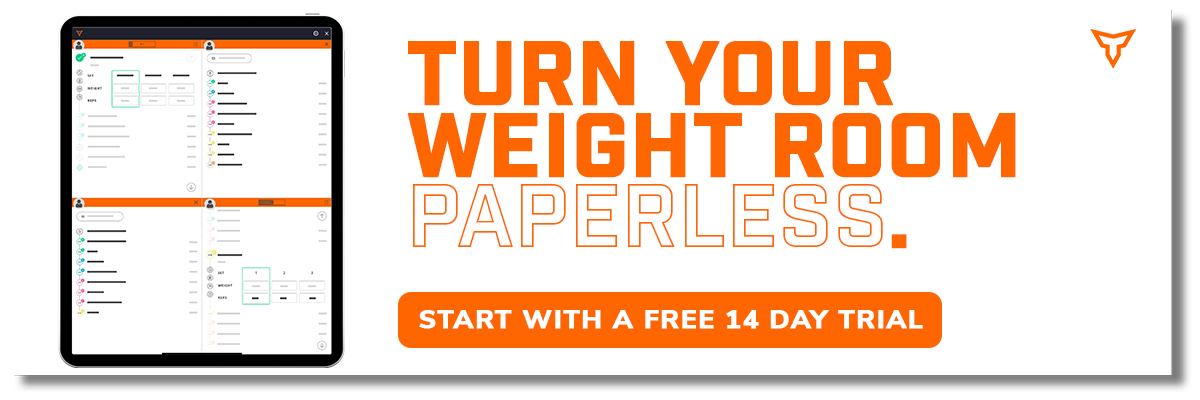A Strength Coaches Guide to Getting the Edge in Leadership
On one afternoon during the middle of a season, I had a 20-minute conversation that changed my career trajectory and answered an unspoken question in sports performance and athletics in general. I was in my office when a senior member of our team asked if he could talk to me about something. I could tell he was stressed and the conversation that followed was eye-opening to me. He began by telling me “Coach, I’ve been the best player on every team I’ve been on. Every coach I have is always telling me to be a leader, but nobody ever taught me how.” Now, to put this in perspective, I would rank this young man in the top 5 team leaders I’ve ever worked with. What I quickly realized is that this young man was not the exception to the rule, but rather the norm.
During the course of my career in strength and conditioning, I’ve been extremely lucky to have had the opportunity to work with over 56 different teams at 7 institutions. That equates to well over 1,000 student-athletes. Among these student-athletes I’ve encountered every personality type and profile along the bell curve (and a few outside). The same is true of sport coaches. I’ve worked with micromanagers, “old school” approaches, the “XYZ university does it so it must be good” crowd, and the strength coach’s dream in the hands-off approach. There were a few common phrases used by almost every coach I’ve worked with; we want player-led teams and we want leaders.
For those of us who have been lucky enough to be around one of those special groups that is player-led and has a culture that’s driven from the inside, we can quickly say the energy is like lightning in a bottle. After the season is over, we’re often left with the question “how do we recreate that?”. Using my background in sports performance combined with my PhD studies in Developmental Psychology, I think I’ve begun to tug on some strings that may answer that question. I would argue as strength and conditioning coaches, we have a large part in doing just that. The difference lies in the level of intentional effort we are willing to give to creating leadership opportunities and building the skills required for strong leaders to emerge.
Inside our programs we assess, plan, implement, measure, analyze, and reassess every metric of human performance. Why should leadership be any different? It is my firm belief that leaders are built, not born. If we break it down to its simplest form and follow a similar approach to Vermeil’s hierarchy of athletic development, we can identify and train the skills necessary to build leaders.

.jpeg?width=336&name=Leadership%20Pyramid(1).jpeg)
The key takeaway to this approach is understanding the relationship between the levels of the pyramid. Just like we can’t train power without the prerequisite strength, we can’t expect high level leadership decisions to be made if we haven’t trained the base skills. In addition, we can utilize the adaptation from the skill being trained to potentiate the next progression. In this Leadership Pyramid, the progression works through the following skills; character, self-regulatory skills, emotional intelligence, “soft” skills, and learning agility. It is important to note that although we are using the framework from sport performance, it would be highly impractical to objectively measure each area using psych surveys and questionnaires. As a coach, I wanted to find a way to measure and assess these traits on the fly in a practical setting.
Character
Character is at the root of leadership. We know this, and I’m sure I am preaching to the choir when I stress the importance of character as a prerequisite for leadership. I would ask this, how are we helping our young men and women identify their vision, mission, and values (VMV)? We have the posters and the handbooks for the team, but do our individual student-athletes know who they are at their core and what they want to achieve? I would argue that the results would say no. These “VMV” statements can tell you a lot about leadership potential. One mistake we tend to make in athletics is associating physical proficiency with leadership. If a student-athlete is highly proficient but their character is not aligned with serving others, you are signing yourself up for mediocre leadership or, at worst, disaster. Allow your student-athletes to explore their identity by defining their long-term vision, their daily mission, and their fundamental values.
Training Plan:
- Have athletes write out their vision, mission, and values
- Have athletes track and score how closely their decisions and behaviors align with their VMV
Now, like anything in sport performance, adaptations take time. Give the student-athletes time to adjust to consciously considering each decision and its implications on their value alignment. As I like to say, becoming self-aware can be shocking (and disturbing at times) for people who have never done this type of self-reflection. It’s a lot like going from the old grainy TV screens to living life in HD.
Self-Regulatory Skills
The ability to deal with stress, failure, and success are key attributes when developing leaders. Nobody wants to follow the person who cracks as soon as adversity strikes, wallows in their own self-pity when they “lose”, or completely abandons their character when they win.
Training Plan
- Manufacture stress, failure, and success for your athletes
- Monitor their response patterns and behaviors over the next week
- Provide feedback in the form of open-ended questions
- Why did you respond that way?
- Were you aware of your response pattern?
- What outcome did you think would come from that response?
- If you could change it, what would you do differently?
- Help the athlete develop a “trigger” such as a phrase or action to bring them back to the present moment during stress, failure, and success
- Repeat as necessary
This is where the coach’s eye becomes increasingly important. Don’t overlook the details. If we wish to see improvement, we have to provide consistent feedback and ask questions. Again, encouraging the student-athlete to self-reflect is key in this process. Our biggest weapons as coaches are 1) reverse engineering and 2) asking questions. This is where coaches are asked to be equal parts mentor and sounding board. It does no good if we simply give the student-athlete the answers. After the initial conversation, allow the new habit time to be engrained by repeating the evaluation (the scenario can be different) and the feedback process.
Emotional Intelligence
Traditionally, emotional intelligence is defined as the ability to navigate self and social awareness, relationships, and self-management. In the team setting, we must build leaders from the inside out. For this reason, I include self-awareness and self-management in the self-regulatory skills part of the process.
All too often, young leaders fall into the trap of categorizing themselves as either “leaders by example” or “vocal leaders”. This is a dangerous model as relying on one or the other can become a crutch or excuse for improper management of relationships and social interactions. For instance, a leader by example may neglect to hold someone accountable because they “let their actions speak for them”. On the other side of the spectrum, a vocal leader may aggressively call someone out publicly in a way that is interpreted by the other party as shameful or demeaning. I don’t say this to say we can’t hold people accountable, but rather that understanding the dynamics of communication and relationships will better equip our athletes to hold people accountable and get the desired outcome, without damaging relationships or team morale.
Training Plan:
This process is more individualized than the previous sections as we are starting to get into the more advanced leadership qualities. For generalization purposes and application in the team setting, I would suggest categorizing your student-athletes into 4 leadership roles:
- Categorize student-athletes into leadership roles
- Heat Seeker – engages actively in hard conversations and is driven by competition
- Guardian – has an eye for the details beyond sport and embodies the standards
- Extensions of the Staff – communicates effectively with both team leaders and coaches/administration (usually accompanied by a high strategic/tactical IQ)
- Thermostat – sets the “temperature” of the environment through action and is able to adjust to the environment - knows when to turn up energy and when to pull back.
- Bring awareness to the key performance indicators via a survey
- Identify which leadership categories they feel most & least comfortable in
- Rank “high EQ behaviors” in order of the frequency that they engage in them. A few of the items on this list include:
- Using teammates names
- Eye contact
- Reading/utilizing appropriate body language
- Intentionally listening during conversation
- Modeling vulnerability (risk taking, innovation, authenticity)
- Engage in conversation beyond sport
- Ask for feedback from peers
- Give critical feedback to peers
- Deploy empathy or ability to empathize with others
- Clarify expectations to teammates
*Keep in mind this is a quick and dirty tool for coaches in the trenches. This list could easily have 30-50 items on it, but no coach has the time nor qualifications to administer full-blown personality assessments.
- Challenge your student-athletes and put them in situations to play a role they may not fully identify with
It is important to set your people up for success by beginning this process in low-stakes scenarios and building over time. For example, if you have a vocal athlete, make them stay quiet during a warm-up and challenge someone else to lead it or be vocal. I would highly suggest setting this scenario up prior to the event with both athletes so it does not disrupt the training session. Continue to identify and push athletes to reflect on their list and engage in high EQ behaviors that were not their natural tendencies. This is also an opportunity to point out the need for multiple types of leaders all along the leadership spectrum.
“Soft Skills”
Although I’m not a fan of the terminology, soft skills are undeniably part of leadership potential. What exactly falls into the category of a “soft skill” is debated; for clarity, we will consider the following as soft skills.
- Empathy
- Decision Making
- Teamwork
- Intentional Listening
- Motivation
*At this level of the pyramid, I would suggest identifying your leadership candidates and focusing on driving small cohorts of student-athletes through specific exercises, meetings, and trainings. The evaluation and training of these skills is labor intensive on the coach’s side and as we all know; strength and conditioning coaches are often overloaded with work as is. For best results, I would suggest forming a leadership council of athletes where you can discuss and provide specific materials for these advanced topics.
Training Plan
- Because these areas are highly situational and dependent upon the emotional intelligence of the people involved, the same evaluation can be used. In this scenario, focus primarily on the desired skillset for your student-athletes and cultivate awareness through the use of surveys and performance feedback from the coach. If the resources are available, this would be the appropriate time to deliver personality tests or leadership assessments.
- Practice, practice, practice. Give your student-athletes the opportunities to practice giving feedback, navigating diverse and challenging social situations, and leading peer groups. This can be done in the privacy of the leadership council through activities such as role playing or in low or medium stakes scenarios in the team setting. Active coaching and discussion from both the student-athletes and the coaches is pivotal in this stage of leadership development. Iron sharpens iron.
Again, the key here is to bring awareness to the interactions our student-athletes find themselves in. Most people go through their social interactions on auto-pilot. We want to build leaders who see and live in high-definition.
Learning Agility
Learning agility is the ability to transfer lessons or experiences from one situation and apply them to others in order to get better outcomes, and has been identified as the most accurate attribute to measure leadership potential. This skill requires a high-level of understanding and “mental bandwidth” as it integrates all the skills previously discussed and leverages individual strengths to create a unique leadership “persona”.
Training Plan
Using before and after-action reviews as a way of “connecting the dots” allows student-athletes to apply lessons from previous experiences and environments as well as start to leverage their strengths in preparation for new challenges or opportunities. Again, utilizing the team model and leadership council framework, these are easy to moderate discussions among teammates that can take place 2-3 times per week or as needed.
- Before Action Review
- What do we want to happen?
- What adversity or obstacles are coming that can cause us to fail?
- What information can we draw from others who have done this already?
- What will make the event a win?
- After Action Review
- What outcome did we want?
- What did we get?
- What caused this (good or bad)
- What will we do the same next time?
- What will we change?
The key in implementing these processes is to engage the student-athletes in what I call the ICA process. ICA simply means identify, conceptualize, apply. We want the student-athletes to identify areas of improvement, strengths, and potential opportunities from each experience. Essentially, this is the fact-finding portion. Next, we want them to conceptualize that information in a way that applies to our situation. This is easily supported by introducing the simple question, why does this matter to us? Finally, we want to apply the findings and formulate new plans that will shape our before-action-review for the next event. For an added step, ask the student-athletes to figure out ways to measure and monitor their successes and learning opportunities (I don’t use the world failure).
To sum it all up, leadership is a skillset that can be built over time with intentional focus and practice. Teaching the basic leadership skills such as character, self-regulatory skills, and emotional intelligence to a group of athletes is absolutely within the realm of practicality for both sport and strength coaches. As you progress to the implementation of soft skills and learning agility, it is important to target those athletes who have mastered the early stages regardless of grade, age, or on-field productivity. As strength coaches, we say we are drivers of the culture, so it is time to prioritize, organize, and measure this. Will it take some work on the front end from a logistical stand point? Absolutely. Will it be worth it? Without a doubt. Within athletics we don’t know when our culture and leadership will be tested, but it’s like having an insurance policy; when you need it, you’ll be glad you have it. Take the time and be intentional about teaching these skills to your student-athletes. I will leave you with this thought. If a student-athlete is with us for 4 years and they live to be 80 years old, that means we are in direct contact for roughly 5% of their life. Within that 5%, we have the opportunity and, in my opinion, the responsibility to teach response patterns, habits, and skills that will serve them for the rest of their lives.
Subscribe to our blog
Subscribe to receive the latest blog posts to your inbox every week.
Related posts

Revisiting the Fundamentals of a Winning Team Culture

5 Things You Need to Create a Strong Gym Culture


